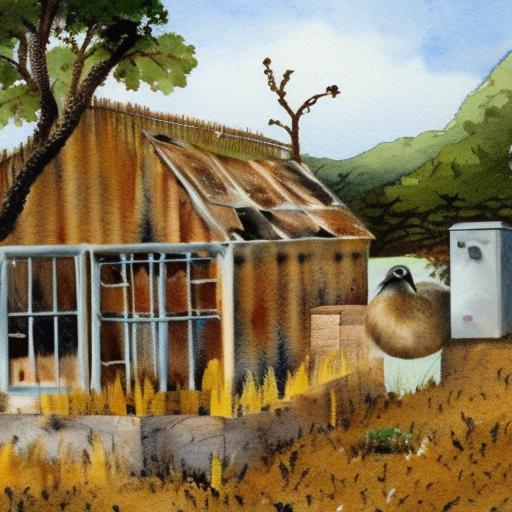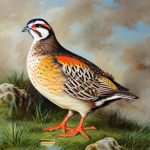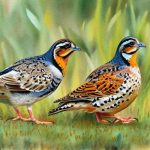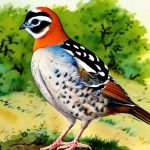When it comes to choosing materials for a bird cage, it’s important to consider the safety and well-being of your feathered friends. Opt for non-toxic materials such as stainless steel, powder-coated metal, or high-quality plastic. These materials are durable, easy to clean, and safe for birds to chew on. Avoid using materials like lead, zinc, or galvanized metal, as these can be harmful if ingested by birds. Additionally, make sure that any paint or coating used on the cage is bird-safe and non-toxic. Natural materials such as untreated wood can also be used for perches and toys, but be sure to monitor for any signs of wear or splintering.
Another important consideration when choosing materials for a bird cage is the spacing between bars. The bars should be close enough together to prevent your bird from escaping or getting its head stuck, but also wide enough to allow for proper ventilation and visibility. For smaller birds such as finches or canaries, a cage with narrow bar spacing is essential to prevent escape. For larger birds like parrots or cockatoos, a sturdy cage with thicker bars is necessary to withstand their powerful beaks and prevent bending or breakage. Overall, selecting the right materials for your bird cage is crucial for the safety and comfort of your avian companions.
Key Takeaways
- Choose materials that are non-toxic, durable, and easy to clean for the bird cage
- Design the cage with enough perches, toys, and hiding spots to keep the bird entertained and active
- Provide adequate space for the bird to move around and stretch its wings
- Ensure proper ventilation to prevent the buildup of harmful fumes and maintain air quality
- Include nesting boxes for birds that require them for breeding and nesting
- Regularly clean the cage and accessories to prevent the buildup of bacteria and parasites
- Monitor temperature and humidity levels to create a comfortable and healthy environment for the bird
Designing the Cage
When designing a bird cage, it’s important to consider the specific needs and behaviors of the bird species that will be housed within it. Different birds have different requirements when it comes to cage design, so it’s essential to tailor the cage to meet their individual needs. For example, parrots and other large birds require plenty of horizontal space for climbing and exercise, as well as sturdy perches and toys to keep them mentally stimulated. On the other hand, smaller birds like finches and canaries prefer cages with more vertical space for flying and hopping between perches.
In addition to considering the size and layout of the cage, it’s important to include features that will enhance the well-being of your birds. This can include natural branches for perches, a variety of toys for mental stimulation, and feeding and watering stations that are easily accessible. Providing a variety of perches at different heights and textures will help keep your birds’ feet healthy and prevent boredom. Additionally, including a secure door latch and easy-to-clean features will make caring for your birds more convenient. By carefully designing the cage to meet the specific needs of your birds, you can create a comfortable and enriching environment for them to thrive in.
Providing Adequate Space
One of the most important factors to consider when housing birds in a cage is providing adequate space for them to move around and exercise. Birds are naturally active creatures that require plenty of room to stretch their wings, hop between perches, and engage in natural behaviors like preening and playing. When selecting a cage for your birds, it’s essential to choose one that is spacious enough to accommodate their needs. A good rule of thumb is to select a cage that is at least twice the wingspan of your bird in both length and width.
In addition to considering the overall size of the cage, it’s important to provide ample room for perches, toys, and feeding stations without overcrowding the space. This will allow your birds to move freely and engage in natural behaviors without feeling cramped or restricted. For larger birds like parrots or cockatoos, a spacious cage with plenty of room for climbing and flying is essential for their physical and mental well-being. By providing adequate space within the cage, you can ensure that your birds have the room they need to stay healthy and happy.
Ensuring Proper Ventilation
Proper ventilation is essential for maintaining a healthy environment within a bird cage. Birds are highly sensitive to airborne pollutants and require fresh air circulation to thrive. When selecting a cage, look for one with good airflow and ventilation features such as vents or mesh sides. This will help prevent the buildup of stale air and reduce the risk of respiratory issues in your birds.
In addition to choosing a cage with good ventilation, it’s important to place the cage in a well-ventilated area of your home. Avoid placing the cage in drafty or excessively humid areas, as this can lead to temperature fluctuations that may stress your birds. Regularly cleaning the cage and removing any soiled bedding or droppings will also help maintain good air quality within the enclosure. By ensuring proper ventilation within the cage and its surrounding environment, you can help create a healthy and comfortable living space for your feathered companions.
Including Nesting Boxes
For breeding pairs of birds or those that may be inclined to nest, providing nesting boxes within the cage is essential. Nesting boxes provide a safe and secure space for birds to lay eggs and raise their young. When selecting nesting boxes, choose ones that are appropriately sized for your specific bird species and made from non-toxic materials. The boxes should be placed in a quiet area of the cage where they will not be disturbed, allowing your birds to feel secure while nesting.
In addition to providing nesting boxes for breeding pairs, some bird species may also benefit from having enclosed spaces within the cage where they can retreat for privacy or security. This can be especially important for shy or nervous birds who may feel more comfortable having a secluded area within their enclosure. By including nesting boxes or enclosed spaces within the cage, you can help meet the natural nesting and privacy needs of your birds.
Maintaining Cleanliness
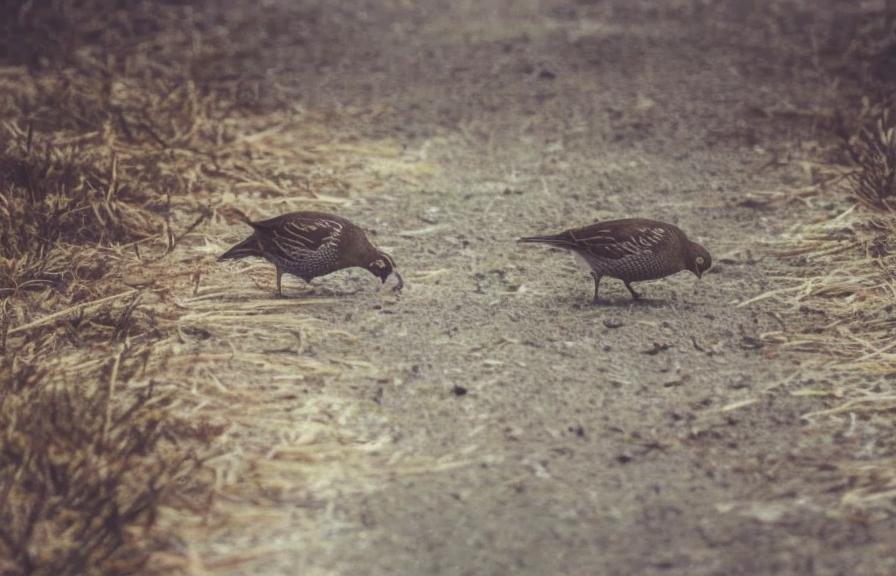
Maintaining a clean environment within the bird cage is crucial for the health and well-being of your feathered friends. Regular cleaning and sanitation will help prevent the buildup of bacteria, mold, and parasites that can pose health risks to your birds. Start by establishing a regular cleaning schedule that includes daily spot cleaning of droppings and soiled bedding, as well as weekly deep cleaning of the entire cage.
When cleaning the cage, use mild soap and water or a bird-safe disinfectant to thoroughly clean all surfaces, perches, toys, and feeding stations. Be sure to rinse everything well and allow it to dry completely before returning it to the cage. Replace any worn or damaged perches or toys as needed, as these can harbor bacteria or pose safety hazards for your birds. By maintaining a clean and hygienic environment within the cage, you can help ensure that your birds stay healthy and happy.
Monitoring Temperature and Humidity
Monitoring temperature and humidity levels within the bird cage is essential for creating a comfortable and healthy environment for your feathered companions. Birds are sensitive to temperature extremes and require stable conditions to thrive. Keep the cage in an area of your home that maintains a consistent temperature between 65-80 degrees Fahrenheit (18-27 degrees Celsius) and avoid placing it near drafts or direct sunlight.
In addition to monitoring temperature, it’s important to keep an eye on humidity levels within the cage. Most bird species require moderate humidity levels between 40-60% to maintain healthy respiratory function and prevent dry skin or feathers. Use a hygrometer to monitor humidity levels within the enclosure and make adjustments as needed with a humidifier or dehumidifier. By carefully monitoring temperature and humidity levels within the bird cage, you can help create an environment that promotes the health and well-being of your avian companions.
If you’re interested in quail breeding cages, you might also want to check out this insightful article on where to put a chicken coop. Understanding the best location for your coop can greatly impact the health and productivity of your poultry.
FAQs
What are quail breeding cages?
Quail breeding cages are specially designed enclosures used for housing and breeding quail. These cages are typically equipped with features that provide a suitable environment for quail to lay eggs, incubate them, and raise their young.
What are the benefits of using quail breeding cages?
Quail breeding cages provide a controlled environment for breeding quail, which can help to increase the success rate of breeding and ensure the health and safety of the birds and their offspring. Additionally, using breeding cages can make it easier to monitor and manage the breeding process.
What are the key considerations when making quail breeding cages?
When making quail breeding cages, it is important to consider factors such as the size of the cages, the materials used, ventilation, lighting, and access for cleaning and maintenance. The cages should also be designed to provide adequate space for the quail and their young, as well as nesting areas and perches.
What materials are commonly used to make quail breeding cages?
Common materials used to make quail breeding cages include wire mesh, wood, and metal. These materials are chosen for their durability, ease of cleaning, and ability to provide a safe and secure environment for the quail.
Are there specific design considerations for quail breeding cages?
Yes, when designing quail breeding cages, it is important to consider factors such as the spacing of the wire mesh to prevent escape, the inclusion of nesting boxes, perches, and a removable tray for easy cleaning. Additionally, providing adequate ventilation and access to food and water is essential.
Are there any regulations or guidelines to consider when making quail breeding cages?
It is important to check local regulations and guidelines regarding the housing and breeding of quail, as there may be specific requirements for cage size, materials, and other aspects of the design. Compliance with these regulations is essential for the ethical and legal breeding of quail.
Meet Walter, the feathered-friend fanatic of Florida! Nestled in the sunshine state, Walter struts through life with his feathered companions, clucking his way to happiness. With a coop that’s fancier than a five-star hotel, he’s the Don Juan of the chicken world. When he’s not teaching his hens to do the cha-cha, you’ll find him in a heated debate with his prized rooster, Sir Clucks-a-Lot. Walter’s poultry passion is no yolk; he’s the sunny-side-up guy you never knew you needed in your flock of friends!

